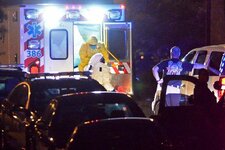- Messages
- 2,948
- Reactions
- 2,214
Hey guys, there are more than a few threads on ebola going on, much of it consists of commentary, blame, and jokes. While I think there needs to be an outlet for these things, existing threads already meet these needs. However for those of us who are looking for actual information, we have to weed through the junk.
So if you have some actual information, a real case report, or some other information, post it here. If you have a joke, a comment, use one of the other threads for it.
So if you have some actual information, a real case report, or some other information, post it here. If you have a joke, a comment, use one of the other threads for it.













